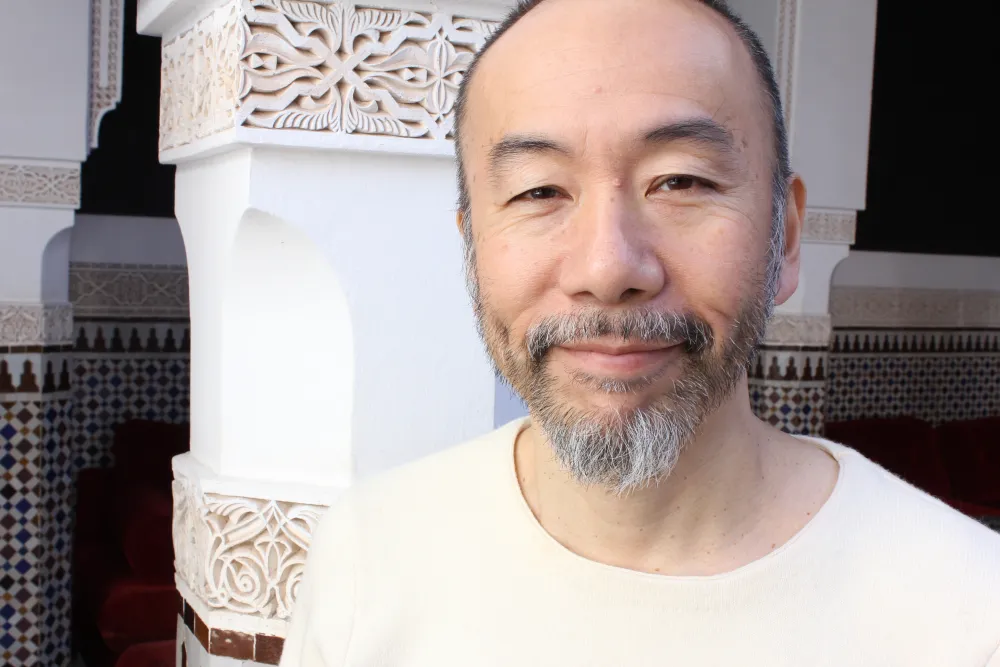Shinya Tsukamoto: Pioneering Japanese Independent Filmmaker
- By -Maria Mash
- Posted on
- Posted in Actors
Shinya Tsukamoto is a groundbreaking figure in Japanese cinema, renowned for his work as an independent filmmaker who defies conventions. Born in 1960, Tsukamoto has established himself as a visionary director, actor, writer, and producer, whose bold and experimental style has left a significant mark on both Japanese and international cinema. Best known for his cyberpunk cult classic Tetsuo: The Iron Man (1989), Tsukamoto’s films often explore themes of technology, identity, and the human body, pushing the boundaries of genre and storytelling. This article delves into Shinya Tsukamoto’s pioneering career, his influence on Japanese independent cinema, and his lasting legacy.

The Rise of an Independent Auteur
Shinya Tsukamoto began his filmmaking journey in the 1980s, initially making short films that combined surrealism with intense visual style. His early works reflected his fascination with the body, transformation, and the chaotic relationship between humanity and technology. In 1989, Tsukamoto released Tetsuo: The Iron Man, a low-budget, black-and-white film that would become a landmark in Japanese cinema. The film’s story of a man who transforms into a metal being after a series of bizarre encounters stunned audiences with its frantic editing, industrial soundtrack, and visceral imagery.
Furthermore, Tetsuo: The Iron Man became an instant cult hit, both in Japan and abroad, and is often credited with helping to popularize the cyberpunk genre in cinema. The film’s success was particularly significant given its independent production and guerrilla-style filmmaking, which broke away from the highly structured Japanese studio system. Tsukamoto’s bold, do-it-yourself approach inspired a new generation of filmmakers, highlighting the potential for creative freedom in independent cinema.
A Distinctive Style: Body Horror and Cyberpunk
Shinya Tsukamoto’s films are known for their distinctive blend of body horror, cyberpunk aesthetics, and psychological exploration. His works often delve into the tension between man and machine, exploring the physical and psychological impact of technological advancement. In films such as Tetsuo II: Body Hammer (1992) and Bullet Ballet (1998), Tsukamoto continues to develop these themes, creating nightmarish worlds where the human body is both a site of transformation and a battleground.
Additionally, Tsukamoto’s use of low-budget practical effects, frenetic editing, and gritty cinematography contributes to the visceral experience of his films. His fascination with the grotesque and the surreal allows him to create powerful metaphors about modern society, alienation, and the loss of humanity in a mechanized world. His work has been compared to that of David Cronenberg and David Lynch, yet Tsukamoto’s vision remains uniquely Japanese, incorporating cultural and societal critiques specific to his context.
Impact on Japanese Independent Cinema
Shinya Tsukamoto’s impact on Japanese independent cinema is profound. By operating outside the constraints of the traditional studio system, he demonstrated that low-budget, independently produced films could achieve both artistic acclaim and commercial success. His approach to filmmaking, characterized by a hands-on style—often serving as director, writer, editor, and actor—embodies the spirit of independence and creative control.
Moreover, Tsukamoto’s success encouraged other Japanese filmmakers to pursue independent projects, thereby fostering a vibrant independent film scene in Japan. His influence is evident in the works of contemporary filmmakers such as Takashi Miike and Sion Sono, who also explore unconventional narratives and challenging themes. Tsukamoto’s emphasis on personal expression and boundary-pushing content has helped redefine Japanese cinema, moving it away from formulaic narratives toward more experimental and avant-garde storytelling.
Exploring Diverse Genres and Themes
While Tsukamoto is often associated with cyberpunk and body horror, his body of work spans various genres and themes, showcasing his versatility as a filmmaker. In Tokyo Fist (1995), he explored the world of boxing as a metaphor for suppressed rage and personal transformation. In A Snake of June (2002), he ventured into erotic psychological drama, combining his trademark visual style with a more intimate exploration of human desire and repression.
In addition, Tsukamoto’s later films, such as Fires on the Plain (2014), show a shift towards historical drama, though still with his distinct perspective. This film, an adaptation of Shohei Ooka’s novel about a soldier’s harrowing survival in World War II, offers a brutal and unflinching look at the horrors of war, while maintaining Tsukamoto’s focus on the physical and psychological toll on the human body. His ability to explore such a wide range of genres underscores his status as a versatile and innovative filmmaker.
International Recognition and Influence
Shinya Tsukamoto’s influence extends beyond Japan. His films have been screened at major international film festivals, including Venice, Berlin, and Cannes, where they have received critical acclaim for their originality and audacity. Tsukamoto’s work has been embraced by cinephiles and genre enthusiasts around the world, earning him a dedicated cult following.
Furthermore, Tsukamoto’s influence can be seen in the works of international filmmakers who admire his uncompromising style and thematic boldness. Directors such as Darren Aronofsky and Christopher Nolan have cited Tsukamoto as an influence, acknowledging his contributions to the cyberpunk and psychological horror genres. His willingness to tackle complex themes and his inventive visual style continue to inspire filmmakers globally.
Enduring Legacy and Future Directions
Shinya Tsukamoto’s legacy as a pioneering Japanese independent filmmaker is firmly established. His work has pushed the boundaries of genre, narrative, and visual style, challenging audiences to confront uncomfortable truths about technology, identity, and the human condition. His influence is not limited to his films but extends to the broader landscape of independent filmmaking, where his DIY ethic and fearless creativity have set a standard for others to follow.
Looking ahead, Tsukamoto continues to evolve as a filmmaker, exploring new themes and narratives while maintaining his distinct voice. His recent films, such as Killing (2018), delve into the samurai genre, demonstrating his ongoing willingness to innovate and experiment with different forms. As he continues to challenge himself and his audience, Tsukamoto’s work remains relevant and compelling, cementing his status as a visionary filmmaker.
Conclusion
In summary, Shinya Tsukamoto is a pioneering figure in Japanese independent cinema, known for his boundary-pushing films that explore the interplay between the human body, technology, and identity. His groundbreaking work, starting with Tetsuo: The Iron Man, has influenced both Japanese and international filmmakers, redefining the possibilities of independent filmmaking. With a career marked by innovation, versatility, and an unyielding commitment to artistic expression, Tsukamoto’s legacy as a visionary filmmaker continues to inspire and challenge audiences worldwide.



